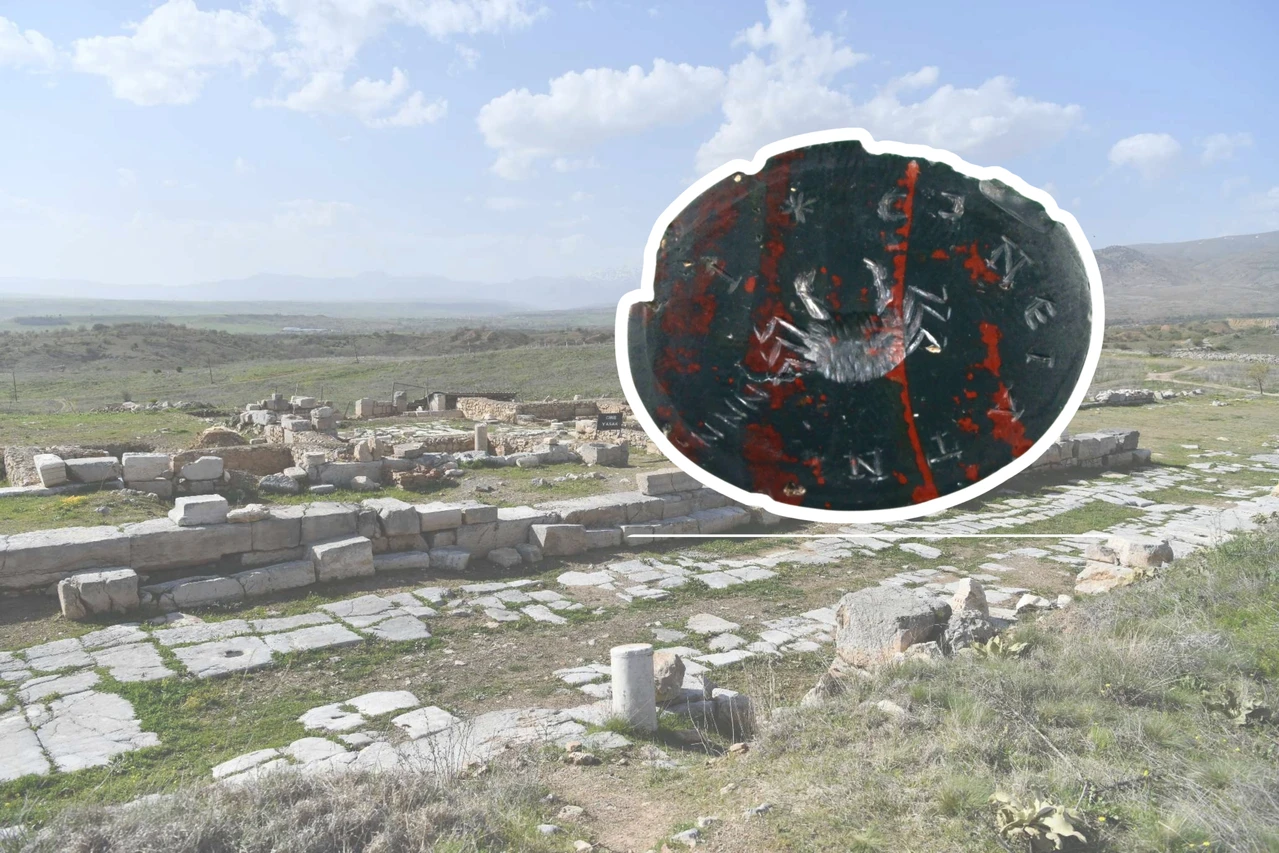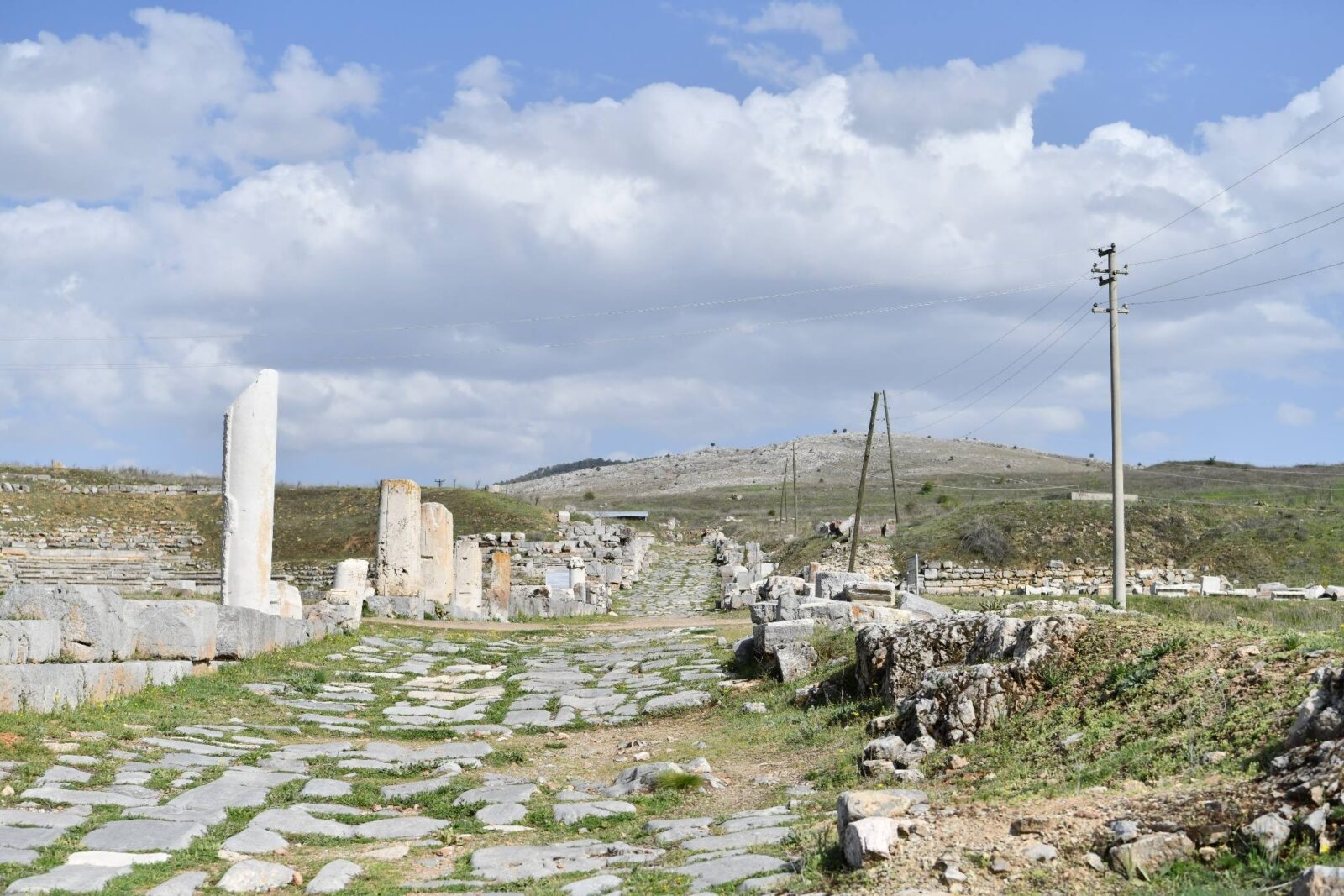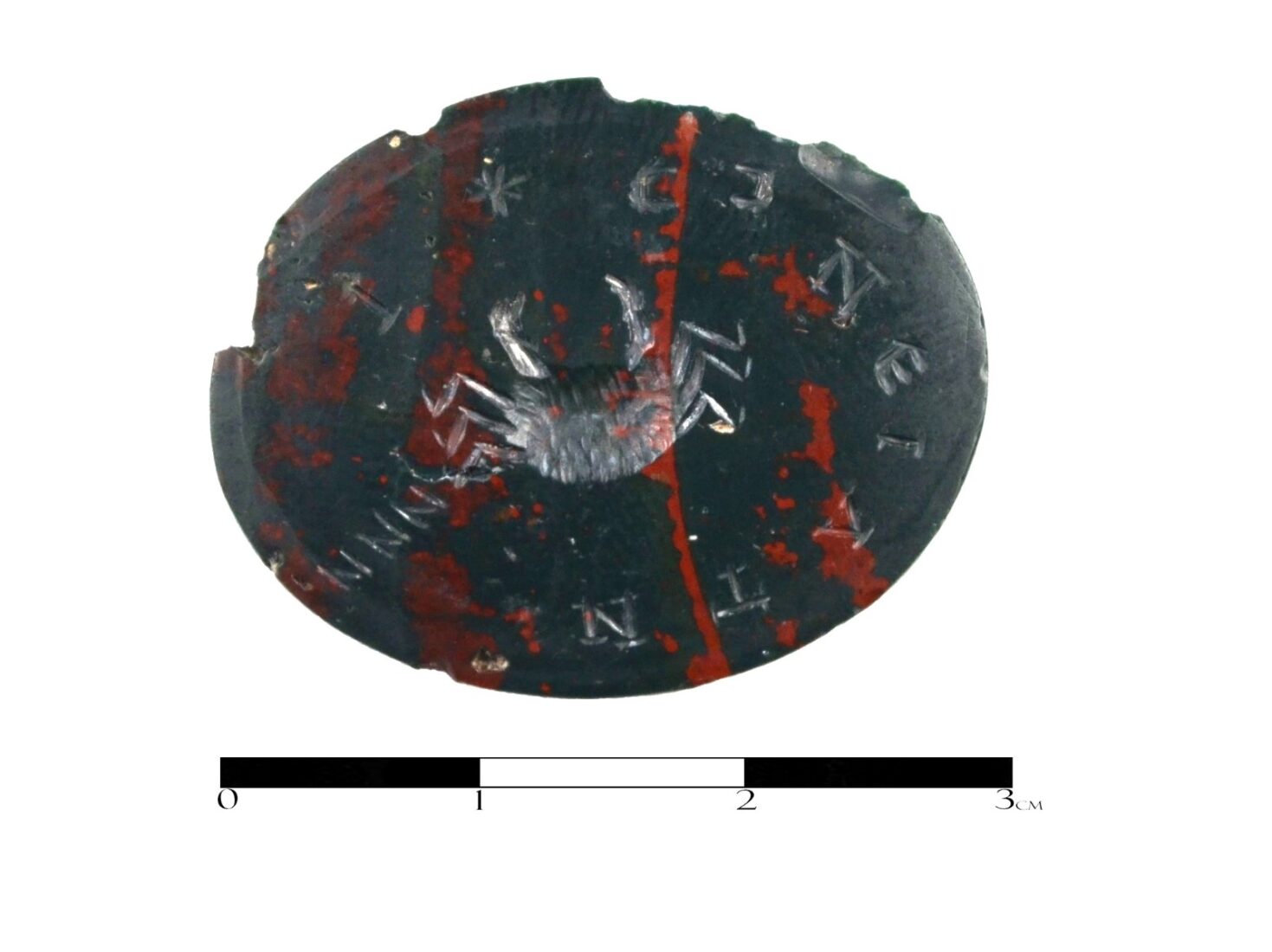Amulet believed to cure cancer unearthed in Türkiye’s Antioch of Pisidia
 Magical amulet made against cancer and Antioch of Pisidia excavations, Isparta, Türkiye, October 30, 2024. (Photo via Antioch of Pisidia Archive)
Magical amulet made against cancer and Antioch of Pisidia excavations, Isparta, Türkiye, October 30, 2024. (Photo via Antioch of Pisidia Archive)
During ongoing excavation works in 2024 at the ancient city of Antioch of Pisidia, a notable finding emerged: a “Magical amulet made against cancer.”
This ancient site, located in Isparta’s Yalvac, is recognized as one of Türkiye’s most important historical and tourist attractions.

Insights from Antioch of Pisidia excavation team
Professor Mehmet Ozhanli, head of the Antioch of Pisidia excavation, provided details about the ongoing research: “The excavation work in 2024 is centered around the church located at Aedilicus Hill. The structure, which was transformed into a monastery in the 10th century A.D., is surrounded by thick walls made of repurposed materials.
Excavations on the inner side of the surrounding wall (Peribolos) have revealed storage areas belonging to the church, numerous structures used for different functions, and a monumental fountain used between the fourth and sixth centuries A.D.”
Numerous large storage jars (Pithos) fixed to the ground were found in the storage areas. However, the most intriguing discovery of 2024 was a gemma, used as a pendant amulet. This amulet is one of the most unique artifacts ever found in the Antioch of Pisidia excavations.

Amulet’s connection to cancer
The gemma sheds light on the ancient understanding of cancer, a disease now considered one of the most dangerous. A father had commissioned this amulet for his ailing daughter, wearing it as a pendant for healing. One side of the amulet depicts a crab, while the other side features inscriptions meant to cure her ailment.
The ancient physician Galen, renowned for his studies on cancer, described the appearance of black veins surrounding cancerous tumors as resembling the legs of a crab: “Just as a crab has legs that spread around its body, the veins in this disease are similar in shape. They spread from the abnormal tumor shaped like a crab.” The term “cancer” actually originates from the Greek word “karkinos,” meaning crab, highlighting the visual similarity.

Legacy from Hellenistic era
These types of talismanic stones were commonly used from the Hellenistic period until the fourth century A.D. The specimen found in Antioch of Pisidia represents one of the best-preserved examples in Anatolia, showcasing significant imagery and inscriptions. These artifacts, which clearly illustrate superstitious beliefs, have origins in Egypt, Anatolia, and Mesopotamia.
Dating back to before the church’s history, this artifact must have been used for many years and likely ended up here in the 10th century A.D. Its value as a precious stone has preserved its significance over time. Given the belief that it could cure cancer, it was probably utilized by various individuals for many years.
The discovery of the amulet not only enriches our understanding of ancient medical practices but also highlights the cultural significance of Antioch of Pisidia. As excavations continue, more insights into the ancient world are expected to emerge, providing a deeper appreciation of Türkiye’s rich historical tapestry.



